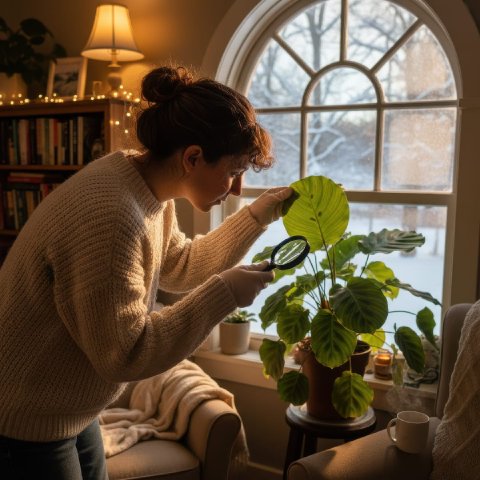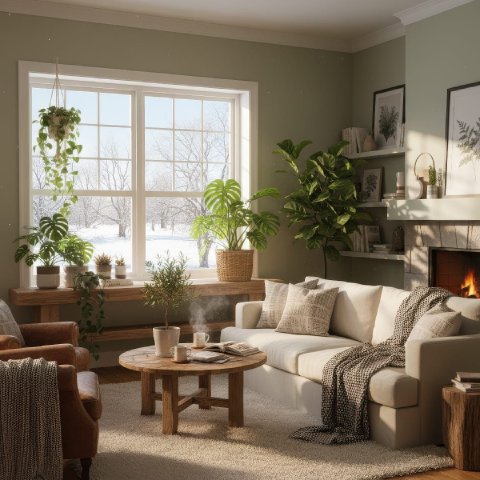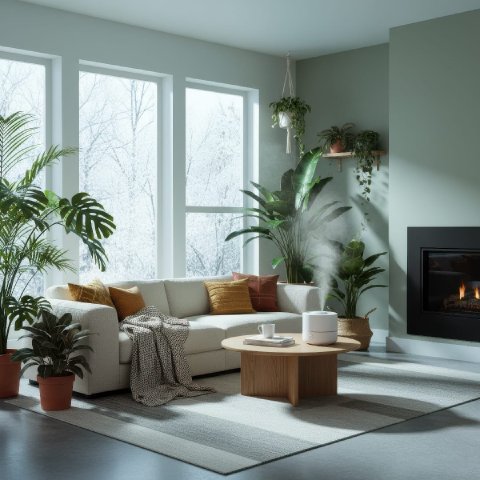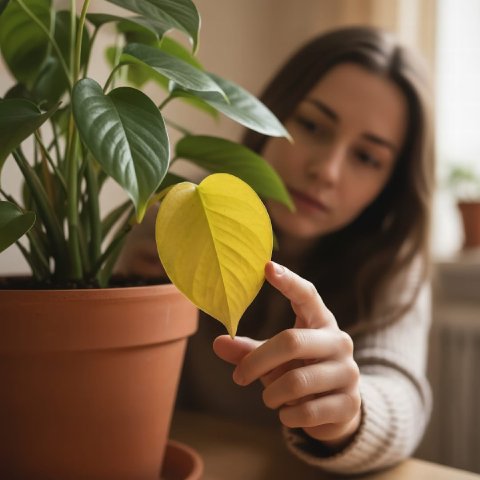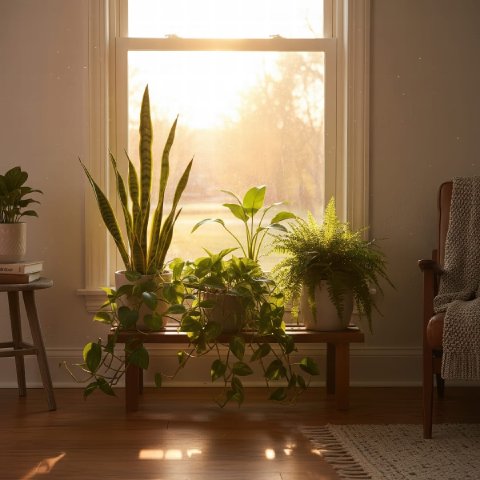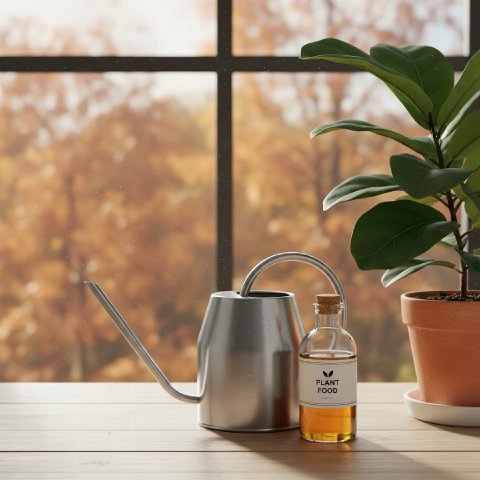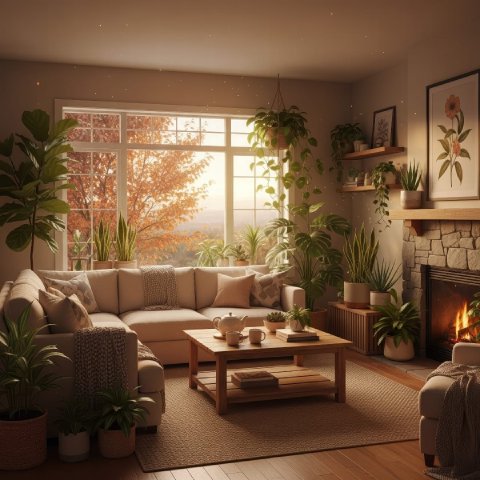🪴 In This Guide 🪴
🌨️ Why Soil Stays Wet Longer in Winter
During winter, the air is cooler and plants grow slower, which means they drink less water.
Combine that with reduced sunlight and you’ve got soil that stays damp far longer than it should.
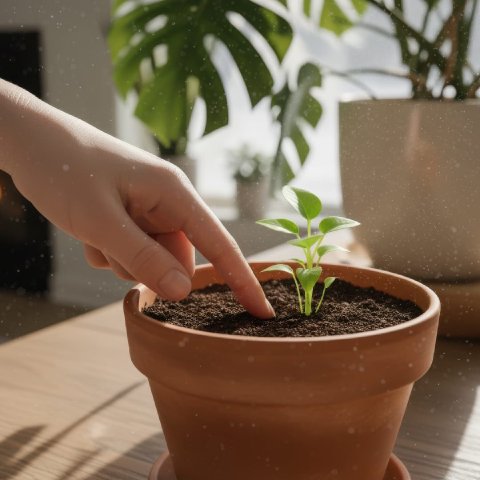
A pot that needed watering twice a week in July might only need it every 10–14 days in January.
If you use decorative planters without drainage holes, be cautious. Extra water can collect at the bottom and quietly cause root rot.
One simple trick is bottom watering-set your pot in a shallow dish of water and let it soak for 15–20 minutes. The plant will absorb what it needs from below, and you’ll avoid drowning it from above.

☀️ How Light and Temperature Affect Watering
Light and temperature are closely tied to how quickly soil dries.
Plants near bright, south-facing windows often need more frequent watering than those tucked in low-light corners.
However, beware of cold drafts. A plant sitting on a chilly windowsill might have cold roots that stop absorbing water, even when the soil looks dry.
👉 Read more: Keeping Plants Warm Without Overheating. Likewise, being too close to a heater can dry the leaves faster than the roots can keep up.

Aim for a balance-bright but stable conditions, where both air and soil stay within the comfortable range.
📊 Summer vs. Winter Watering Habits
| Plant Type | Summer Habit | Winter Habit |
|---|---|---|
| Succulents / Cacti | Every 2–3 weeks | Every 4–6 weeks |
| Tropical foliage (Monstera, Pothos) | Weekly or when top inch is dry | Every 10–14 days |
| Ferns, Calatheas, humidity lovers | Keep lightly moist | Slightly reduce, never bone-dry |
| Flowering plants (African Violet, Anthurium) | Moderate watering | Still moderate, but check light levels |
These are flexible guidelines, not strict rules.
Your plant’s behavior will tell you more than any chart-curling leaves usually mean thirst, while yellowing leaves or soft stems point to overwatering.
🪣 Practical Winter Watering Tips
- Always use room-temperature water to avoid shocking the roots.
- Water in the morning, so any splashes dry before nightfall.
- Empty saucers and cachepots after 10–15 minutes.
- If humidity is low, you can also boost humidity to help the soil retain moisture longer.
- Don’t stick to a schedule-check the soil each time before watering.

Winter watering is more about restraint than routine.
Let the soil breathe between waterings, and you’ll keep roots strong, fungus under control, and plants content until spring returns.
❓ Frequently Asked Questions
How often should I water my houseplants in winter?
Most plants need watering about half as often as in summer. Always check the top inch of soil-if it’s still damp, wait a few more days before watering.Can I use cold tap water on my plants?
No. Always use room-temperature water to avoid shocking the roots, especially during winter.Why is my plant’s soil staying wet for days?
Cooler temperatures and reduced light slow evaporation and growth, so moisture lingers longer. Adjust your watering schedule accordingly.Should I mist my plants in winter?
Instead of misting, focus on raising humidity with a humidifier or pebble tray. Misting alone doesn’t help much and can lead to leaf spots.What are the signs I’m overwatering?
Yellowing leaves, soft stems, and moldy soil are classic signs. Let the soil dry out and make sure pots drain properly.📚 Related Reading
For a complete seasonal overview, check out our Winter Houseplant Care Checklist.
You might also like:
